Road Ecology in Presqu'ile Provincial Park
Published
Categories
Author
Blog Post
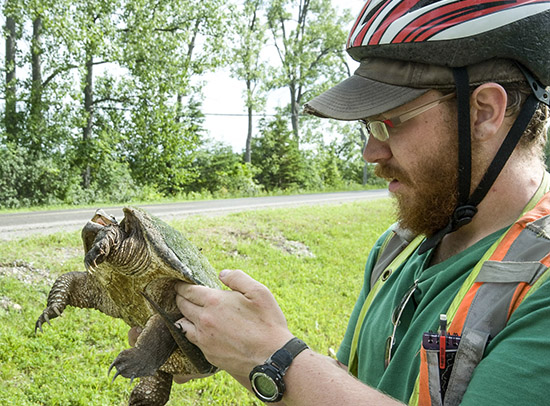
Recently, I visited Presqu'ile Provincial Park to get a better understanding of Road Ecology - a fairly new science in Canada. I met Sean Boyle - full disclosure - my son, to find out what his PhD project entailed in the park. First, I would like to say that it is quite a beautiful park with hiking paths through the forest as one would expect - dead fall where it fell and brush where it happens to grow - a true forest hiking experience. But that is not why I visited Sean. Sure, a parent likes to know what their kids are up to, but this was more about what he was doing and why. In a nutshell, he and his intern are searching for critters near the road and on the road in the park - dead or alive; his preference is alive. Typically, he finds turtles, snakes, frogs, chipmunks - small critters - dead on the road, and turtles on the way to crossing the road. The live ones, he moves out of harm’s way. All of the animals he finds go through a process of measurement, weight, checking to see if they have been intercepted before, and if not, marking them for future reference. I should explain here that Sean and his intern, Tasha Noble, both travel their own specified routes of 1.2 KM and then back again on the other side of the road three times a day by bicycle: 9AM, 6PM and again at 10 PM. They also walk the route immediately following the 9AM bicycle trip. Between the morning and evening runs, they check out their nets in the swamp with their canoe. One of the things you learn quickly about outdoor science is that the research needs to continue in the rain and heat and cold and snow and anything else Mother Nature decides to throw at you.
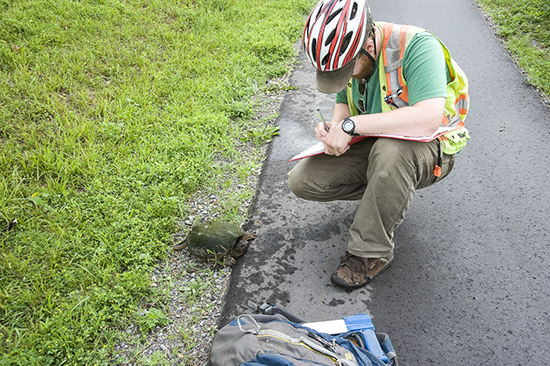
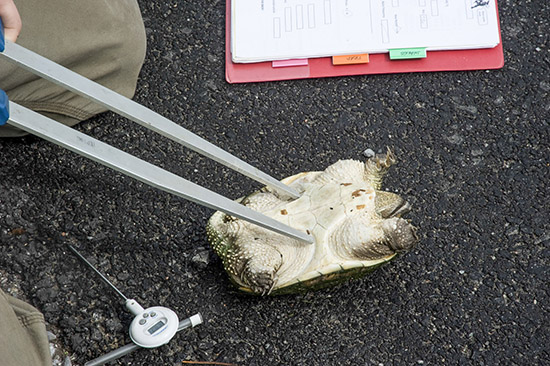
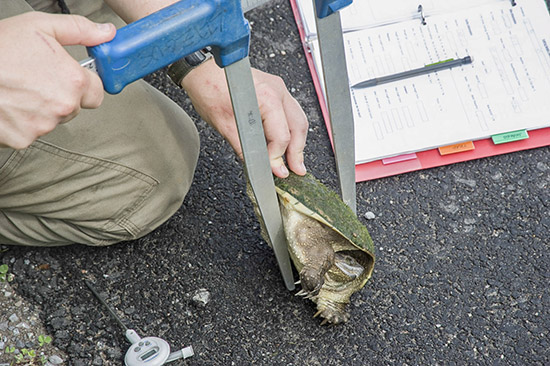
In layman's words, the basis of Sean's work is to find where the majority of critters are crossing the road and why they are crossing where they are - familiar wetlands, ponds and breeding areas -and to make suggestions to the Ministry of Natural Resources and Ontario Parks as to where culverts and fencing should be placed on the road to help mitigate the mortality of the critters - again, generally frogs and turtles. We also went out into the wetlands in a canoe to check a number of traps for turtles to see where the critters are going. Many of them have had microchips installed on their bodies - similar to pet dogs - and their movement can be monitored.
Prior to Sean getting interested in Road Ecology, I had never heard about it. I did know about the under and overpasses in Banff, but didn't know - really - what they were all about.
During the winter, he monitors the underpasses and overpass in Sudbury on Hwy. 69, checking which animals have been using them - lynx, fox, elk, deer etc. by tracking their footprints.
I find the marriage of science and technology extremely exciting. Being able to use the information garnered from tracking animals to come up with a safe way to help get them across the road is our way of telling Mother Nature that we know we are impeding on you territory and are looking for ways to avoid problems.
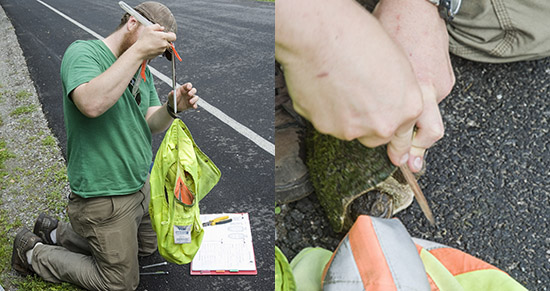
From time to time, he has had to tell a Hwy crew that a Species At Risk had been found on the route of a new road and construction stopped until a solution could be found. This gave me a better understanding of the power the Ministry has in creating a cease and desist order until a mutually agreeable solution could be found.
Part of his work involves outreach to schools, summer camps, local libraries and in the park itself. The idea is to get kids and adults alike interested in conservation at a very hands on, grass roots level – like helping a turtle get safely across a road. “Citizen Science” at its best. The Toronto Zoo’s “Frog Watch” is a great example of Citizen Science.
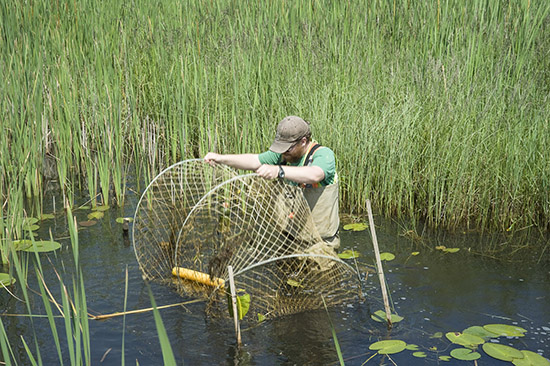
Sean is but one of a number of young people who have decided to make a carreer out of not only protecting the environment, but also trying to find ways to mitigate the death of those critters that find themselves in the headlights of an oncoming car.
If you are interested in finding out more about his work and Road Ecology, Sean has a Twitter account - @PQPTurtles - where he tweets about the project, herpetology conservation in Ontario, as well as other interesting things he encounters along his routes.


